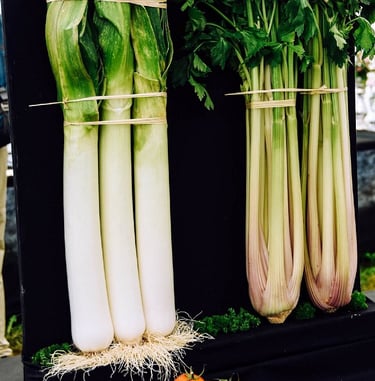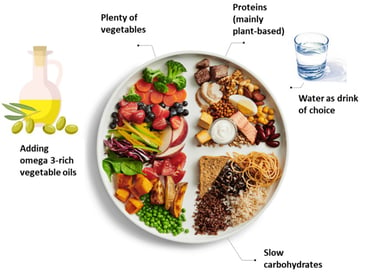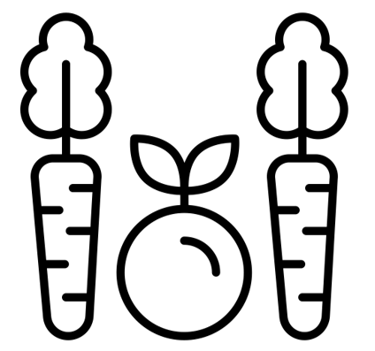Eating at least five portions of fruits and vegetables a day: what does it mean?


If I eat a strawberry, a radish, a bean and two bananas, am I in the right?
No, not really ;)
I think it's a good idea to change this recommendation to "eat half your meals as vegetables and at least one portion of fresh fruits a day".
In fact, in terms of quantity, it's better to eat vegetables than fruit. On the whole, they're richer in minerals, without having to be ashamed of their vitamin content, and they're lower in carbohydrates, at least the quick sugars. What's more, I don't know about you, but I can't manage to eat much acidic fruit - it just falls on my stomach. So, I limit myself to one piece of fresh fruit a day. What I do two or three times a week is making a homemade juice, using an extractor, mixing fruit and vegetables. My favorite blend is an apple, an orange, a lemon, half a cucumber and a carrot. I drink it as soon as it's ready, so as not to lose any vitamin or mineral molecules, and it's a real delight!
But let's get back to our vegetables. To get enough fiber and absorb enough vitamins and minerals, you should make sure your plate is half vegetables. The rest should be made up of a quarter of slow carbohydrates (legumes, tubers, wholegrain cereals) and a quarter of proteins (legumes, fish, meat, cheese). I'm simplifying, because meat isn't all protein (in fact, it's around 20% protein), wholegrain isn't all carbohydrates, and so on. What's certain is that it should be half vegetables. To achieve this, I always prepare at least three different vegetables and I also vary the cooking: some are steamed, others roasted in the oven and still others eaten raw. For example:
Raw vegetables (sliced, grated or spirally cut): cucumbers, carrots, radishes, white cabbage, red cabbage, tomatoes, cauliflower, celery, beet, etc.
Oven-roasted vegetables, brushed with olive oil so that they cook without burning, with herbs and spices (about 20 minutes at 180°C): sweet potatoes, zucchini, parsnips, eggplant, squash, peppers, etc.
Steamed vegetables (approx. 20 minutes): broccoli, beans, peas, artichokes, Brussels sprouts, asparagus, etc.
Varying vegetables also in terms of colors helps to diversify the antioxidants they contain.
Varying the way they're cooked not only gives a variety of flavors, but also allows you to consume both soluble (cooked vegetables) and non-soluble (raw vegetables) fiber. Here again, I'm simplifying, because even cooked vegetables still have some non-soluble fiber, and even raw vegetables have some soluble fiber. Why eat both types of fiber? Because they complement each other:
Soluble fiber forms a gel in the intestine and acts as prebiotics, feeding our intestinal bacteria. They also help keep blood sugar levels stable by slowing glucose absorption. They also slow down intestinal transit. Their fermentation by intestinal bacteria produces short-chain fatty acids (acetate, propionate, and butyrate) which have anti-inflammatory and anti-cancerous effects on the intestine and increase satiety. Finally, they reduce the quantity of circulating fats, notably cholesterol.
Non-soluble fibers swell by absorbing water, and also promote satiety (feeling of a full stomach), speed up intestinal transit and help eliminate toxic molecules present in the intestine.
Here's an illustration I love, from Canada's Food Guide. I added the little bottle of olive oil that was missing to make this plate an example of an ideal meal:
Plate © Canada's food guide ; Water © cdrcom/stock.adobe.com ; Oil © iStock/Elena Kutuzova
To find out more, also read these articles:
On the issues of industrial foods compared to a natural diet: https://isabellemaesnutrition.com/en/processed-foods
On how to broaden the range of foods that have a place in a healthy diet: https://isabellemaesnutrition.com/en/forgotten-foods
Vegetables picture by Nik


